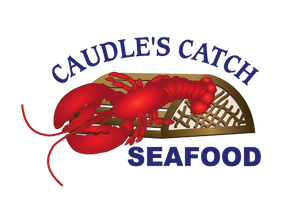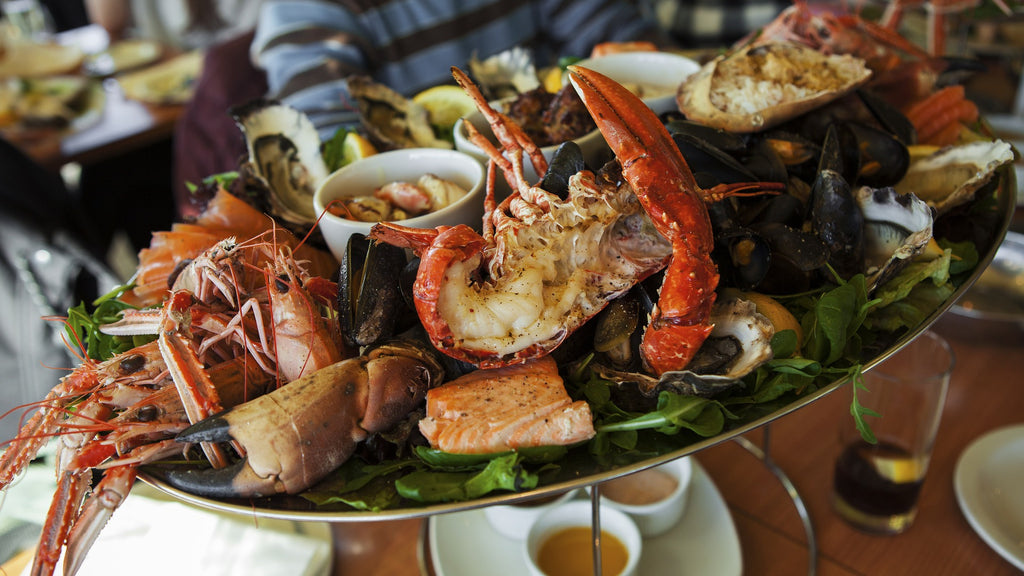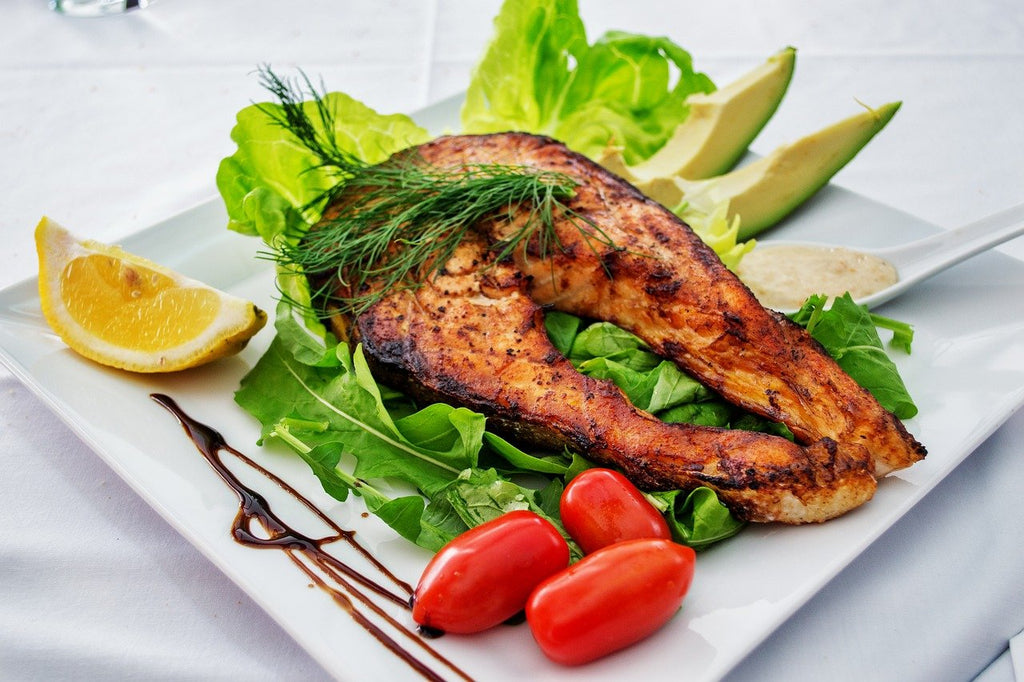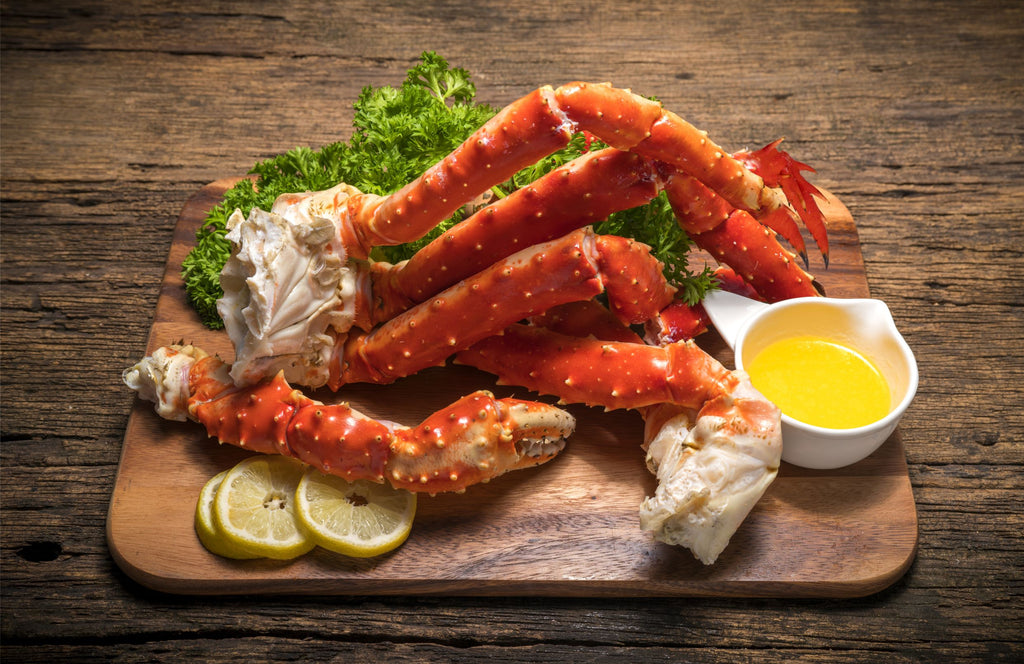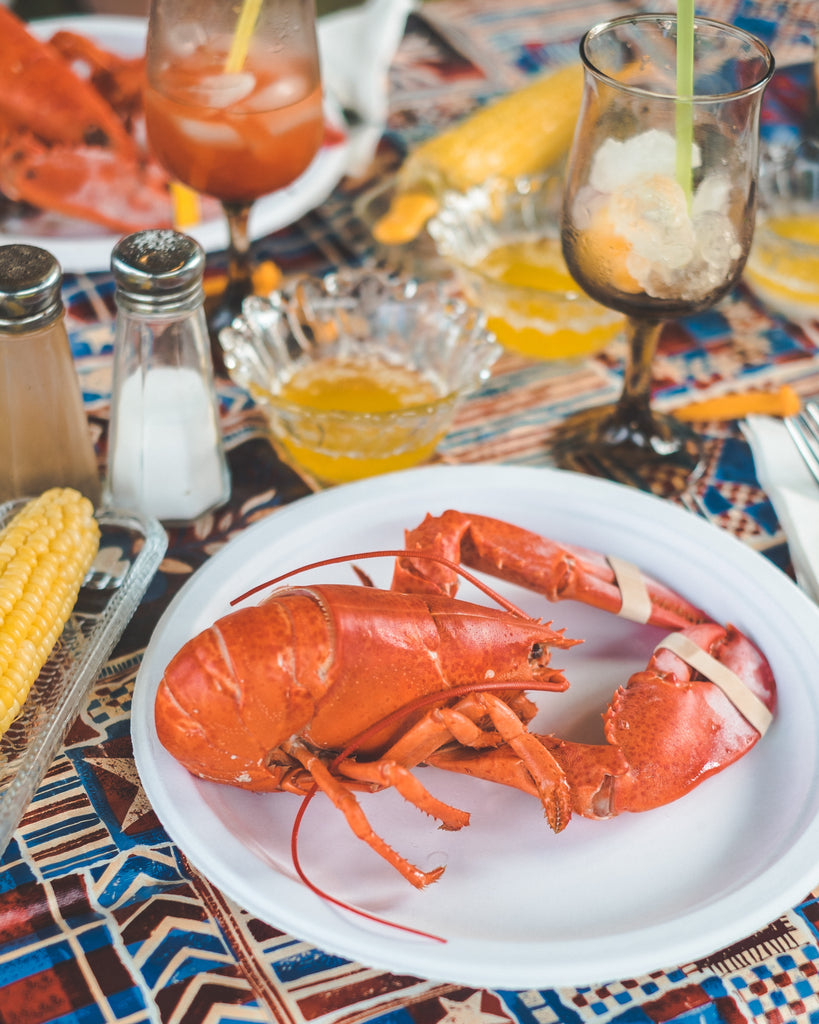Seafood Preparation & Guides
Seafood Buyers Guide
Sashimi-Grade Fish
Our definition of "sashimi-grade" is fish that is at the peak of freshness. This means the fish is suitable for raw consumption. Because we do not freeze your fish to kill bacteria, anytime a person chooses to consume raw protein of any kind, they are taking a risk.
There are two popular sashimi-grade items we offer; Yellow Fin Tuna and Atlantic Salmon.
Yellow fin tuna is often referred to as "ahi" tuna, which is a Hawaiian term for it. This tuna can remain suitable for raw consumption for 2-3 days before becoming "#2" or "grilling grade" tuna. You'll be able to tell if it is #2 grade by the colour. Over time, tuna's colour becomes more brown and loses its deep red colour.
Atlantic salmon will remain sashimi-grade for 1-2 days before becoming unsuitable. Because of the speed it loses freshness, it is recommended that the salmon is kept well iced in refrigeration.
Caudle's Crab Selection Guide
At Caudle’s, we offer a wide variety of crab. Snow and king crab are among the most popular.
Snow Crab
Snow crab is wild-caught in both the North Atlantic and North Pacific Oceans. At Caudle’s, our snow crab is usually from the Gulf of St Lawrence from either Quebec or New Brunswick. Snow crab sold fully cooked in clusters with 4 legs and one arm with a claw on each. The meat is sweet, tender and is best steamed and served with melted butter.
Snow crab clusters are currently offered in 2 sizes at Caudle's;
Premium 10-12oz Clusters
Ocean Run 5-8oz Clusters
Snow crab meat is also available at times and is usually fairly expensive. Snow Crab meat is great for making crab dip or topping a steak.
King Crab
King Crab is typically caught in the North Pacific Ocean in the Bering Sea. There are two varieties of king crab sold at Caudles.
Red King Crab is considered the more premium of the two. It is typically larger sized and has a bright red colour on the top with a creamy-white underside. The meat is firm but tender and flaky with a rich flavour that is considered by most to be the best flavour of all crab. Red king crab is highly sought after and there is a premium price attached.
Gold King Crab is a close relative of the Red King Crab, they are typically smaller sized legs with a slightly softer texture than Red King Crab. They are a much cheaper alternative to red and would be the best bang for the buck when it comes to king crab legs.
How to Safely Store Seafood
Thawing Frozen Seafood
Thaw frozen seafood gradually by placing it in the refrigerator overnight.
If you have to thaw seafood quickly:
- Seal it in a plastic bag and immerse it in cold water, or
- Microwave it on the "defrost" setting and stop the defrost cycle while the fish is still icy, but pliable. Only use this method if the food will be cooked immediately thereafter.
Is My Seafood Done? A Comprehensive Guide
How to tell if your seafood is done:
Most seafood should be cooked to an internal temperature of 145°F. However, even if you don't own a food thermometer, there are other ways that you can tell if your food is safely cooked.
- Fish: Slip the point of a sharp knife into the flesh and pull it aside. The flesh should be opaque, and separate easily. If you cooked the fish in the microwave, check more than one spot to ensure doneness.
- Shrimp and Lobster: The flesh becomes pearly-opaque.
- Scallops: The flesh turns milky white or opaque and firm.
- Clams, Mussels, and Oysters: Watch for the point at which their shells open, which means they’re done. Throw out the ones that don’t open.
That's all there is to it! You're all set to serve up a delicious, healthy plate of seafood for your next meal or dinner party.
Take a look at our selection of fresh fish to see what you can get ordered right to your door!
How to Cook & Clean a Lobster
Learn how to cook and clean a lobster with Caudle's Catch Seafood!
Click here to download our PDF brochure for proper lobster handling. Just want the basic information? We have you covered:
Storing Lobster:
Live lobster can be properly stored by placing in the refrigerator and covering with a damp cloth or newspaper. They will live easily for 12-24 hours in this environment. Do not put lobster in the sink, bathtub, or any form of fresh water.
Cooking Live Lobster:
Boiling is the simplest and most traditional method for cooking live lobster. Fill a large pot with enough salt water to fully submerge your lobster. (1 tbsp. salt per 1 litre of water). Bring to a heavy boil.
Grasp lobster firmly and plunge head first into the already boiling water. Cover. Once water has returned to a boil, cook 12 minutes for the first pound, and 4 minutes for each additional pound (ex: two pound lobster would cook for 16 minutes after the water returns to a boil).
Want to learn more about cooking and eating lobster? Download our comprehensive PDF brochure!
How to Shuck an Oyster
Choosing the right knife:
Depending on shucking style and which variety of oyster is being opened, some knives are more suitable than others. A pointy blade will give maximum penetration. A broad blade will give maximum leverage. A large handle will give maximum torque.
Knives are also made from different materials. Blades come in carbon or stainless steel, and handles are made from wood or plastic depending on the manufacturer. The salt water from oysters will rust a carbon steel knife, so they require the most care. Stainless steel requires the least amount of care but just like a chef’s knife, regular servicing is required.
Oyster anatomy:
The most important thing to know before opening oysters is the basic anatomy. The shell consists of two halves called valves: the top is called the lid, the bottom is the cup, the front is the spoon, and the back is the hinge. Inside the oyster the key points are the Adductor Muscle, Gills, Stomach and Mantle.
How to shuck an oyster:
Using a knife, gently penetrate the hinge and with a twisting action, “pop” the two shells apart. Sometimes it is necessary to enter the oyster from the side as opposed to the hinge. A cloth over your hand may reduce chance of injury, and aid in holding the oyster. Keeping the knife tight to the top shell, slide in and sever the adductor from the Lid.
At this point the most common mistake is to damage the stomach or tear off the Lid before completely severing the muscle, which will result in tearing the Mantle.
Turn the oyster 180 degrees, and using the sharpened edge of the blade, sever the Adductor from the Cup. Make sure to completely sever the muscle from the shell. Shucking too fast will result in a messy plate and increase chance of injury.
Serve oysters on ice with tabasco sauce, worcestershire sauce, lemon, or your favourite dressing. Oysters are best eaten straight from the shell! You want to eat all the meat and the liquor that comes with it to truly get the best flavours.
Are you ready to try your hand at shucking an oyster? Order oysters now!
